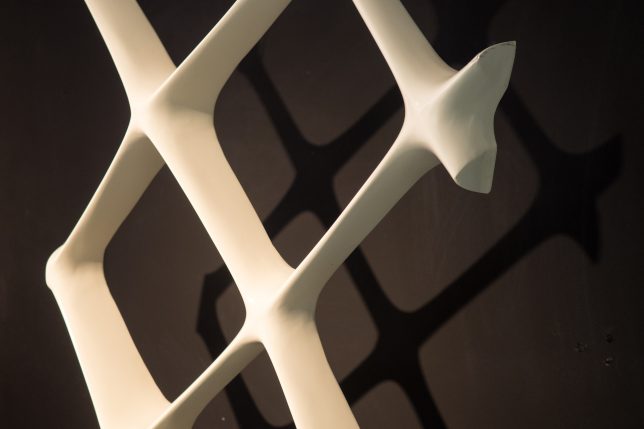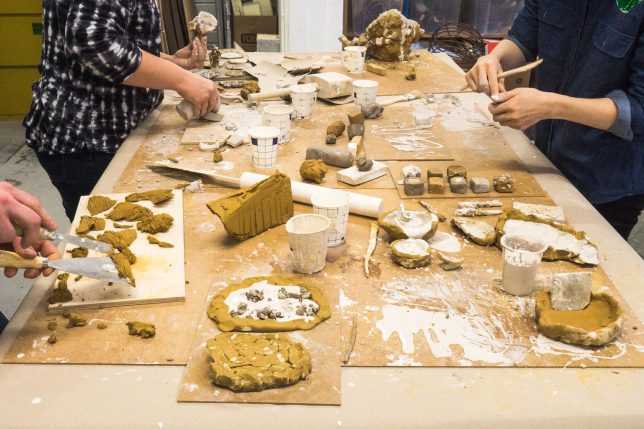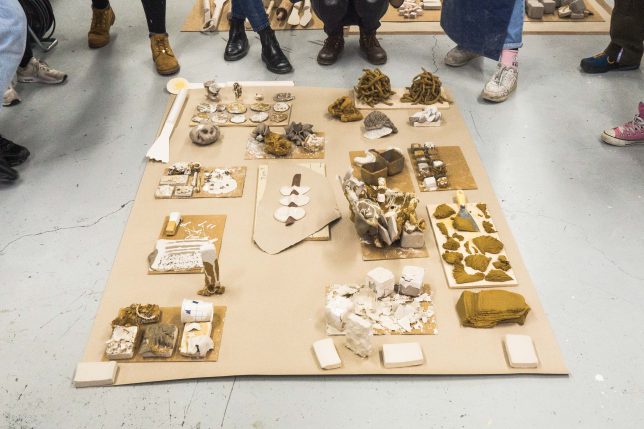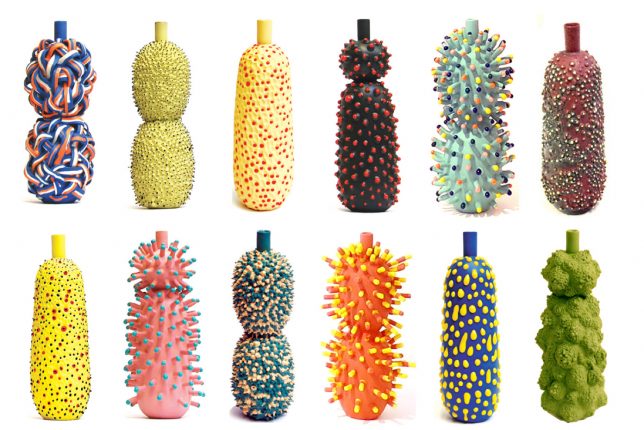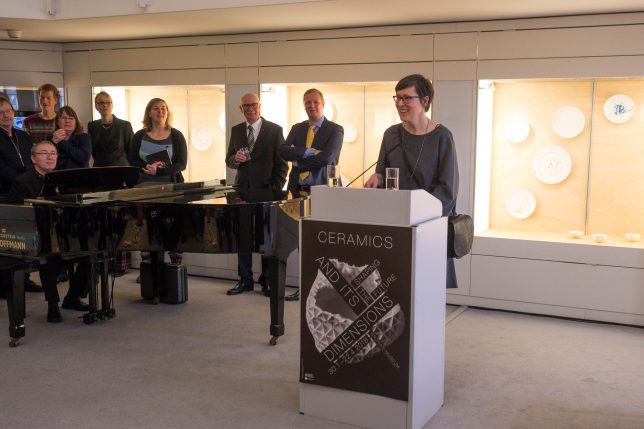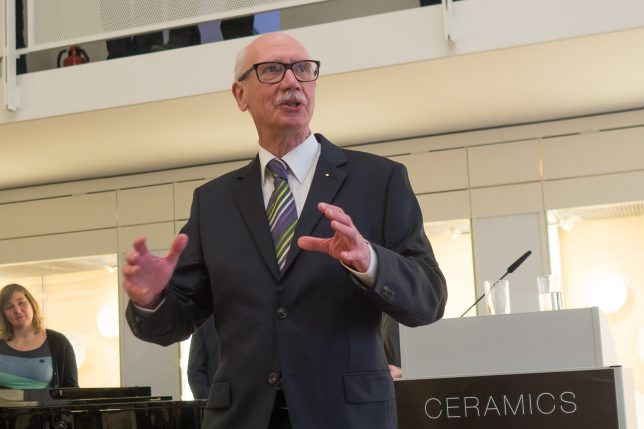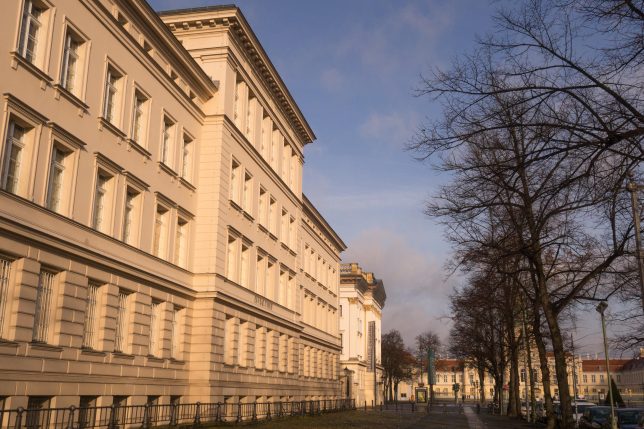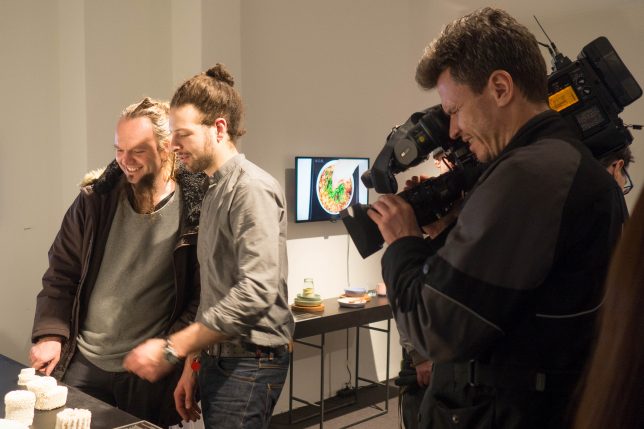In Berlin the core of the exhibition has been joined by three local additions curated by professor Barbara Schmidt from Weissensee Kunsthochschule Berlin.
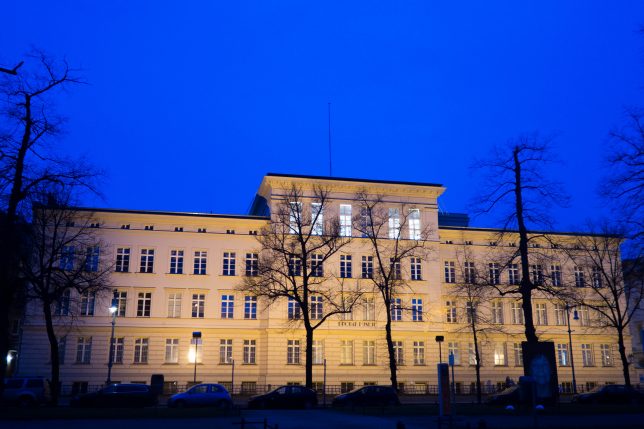
The exhibition opened at the Bröhan-Museum in Berlin on Sunday January 28th 2018. The core of the exhibition and the local additions take up almost all of the third floor of the museum. The core of the exhibition is placed in a big hall and the local additions together with the Future Lights winners are located in three smaller rooms. The three local additions are the results of two experimental ceramics courses organised at the Weissensee Kunsthochschule Berlin, final thesis projects of the students of the school and a local architectural ceramics adaption. The themes of the local additions are well linked with the themes of the core of the Shaping the Future exhibition. Several of the students who present their works in the additional part have also works in the core of the exhibition.

Experimental Courses at Weissensee Kunsthochschule Berlin
In one of the smaller rooms two project courses carried out at the Weissensee Kunsthochschule Berlin are presented. The first project took place in winter term 2015/2016 with the headline “table tools”. The project concentrated on the role of ceramics in the preparation and consumption of food. During the course the students tried to answer the question: How does it influence the food and drink related design if the design is developed from the point of view of the physical properties of food, the food preparation techniques and the sensory perceptions during consumption? The works are from Lilith Habisreutinger, Janis Gildein, Maximilian Bellinghausen, Henrik Hjort, Alexandre Bailly and Simon Ertl.
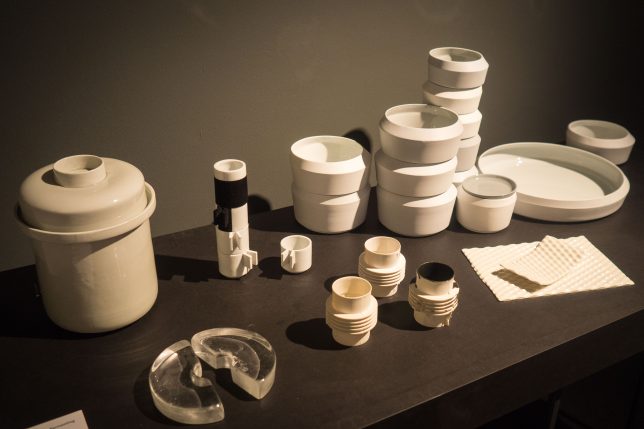
The other project “Clay-Stones-Earth” took place in summer term 2017 and it concentrated on local materials and their use in ceramics and building. Berlin is located in the state of Brandenburg which is usually considered low in raw materials. The local materials – lignite, wood, sand and clay – have nevertheless been important in the building of the city of Berlin and in the future they might be able to offer ways to develop a more sustainable building culture. This was one of the themes of this course that was an interdisciplinary laboratory for sustainable design. In some of the outcomes of the course 3D printing in ceramics has played an integral role. This section has works from Tau Pibernat, Cindy Valdez, Ursula Jarero, Robin Hoske, Joy Weinberger, Adèle Le Houerf, Anton Richter, Benjamin Gladki, Rahel Jacob, Nils Jünke and Tanguy Fraiture.
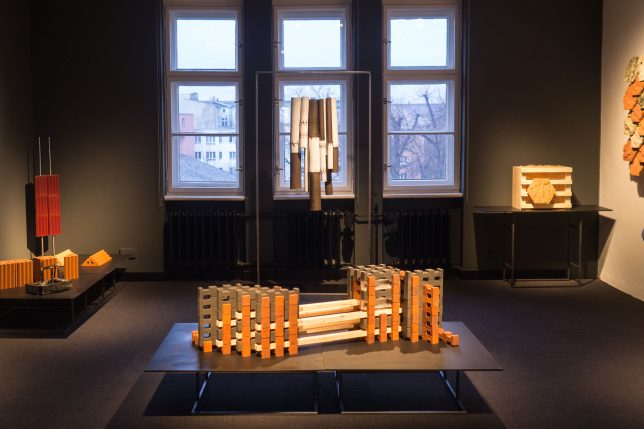
The themes of these two project courses link intriguingly with three of the key themes of the core exhibition: food design, local materials and new technologies. These themes were also present at the experimental Kahla workshop in April 2016 at the Kahla Porcelain factory, where several of the works of the core of the Shaping the Future exhibition were initiated or even produced.

Design and Experiment – Final Thesis Projects
Next to the room of the two experimental courses of Weissensee Kunshochschule Berlin there is a room that presents the final thesis projects of seven students of the school. The works were developed under the study perspective Design and Experiment and they investigate the potential of ceramics material for vessels and tools for the preparation, consumption and for a deeper sensory perception of food. Through the works the students also examine the potential of different industrial, artisan and digital production methods – such as ceramic 3D printing – as well as experiment with materials, surfaces and processes.

In this section Babette Wiezorek, Dawei Yang, Laura Görs, Qianyu Zhu, Sarah Bräuner, Maria Braun and Maximilian Bellinghausen present their final thesis projects. These works also link well to the works of the core of the Shaping the Future exhibition, they share for example the themes of food design and new technologies.

Architectural Ceramics to Improve Concert Hall Acoustics
Next to the works of the Future Lights in Ceramics winners a fragment of a ceramic architectural adaption hangs on the wall. This ceramic structure was designed to improve the acoustic features of the hall of Berlin State Opera, when it was renovated. The whole structure is placed on the ceiling of the opera hall and it consists of approx. 250 square meters of open diamond lattice made out of CPBP (Chemically Bonded Photosphate Ceramics). The structure is designed by the architects of the HG Merz architecture firm and is a great example of how ceramics can be used to create new adaptions for architecture.
